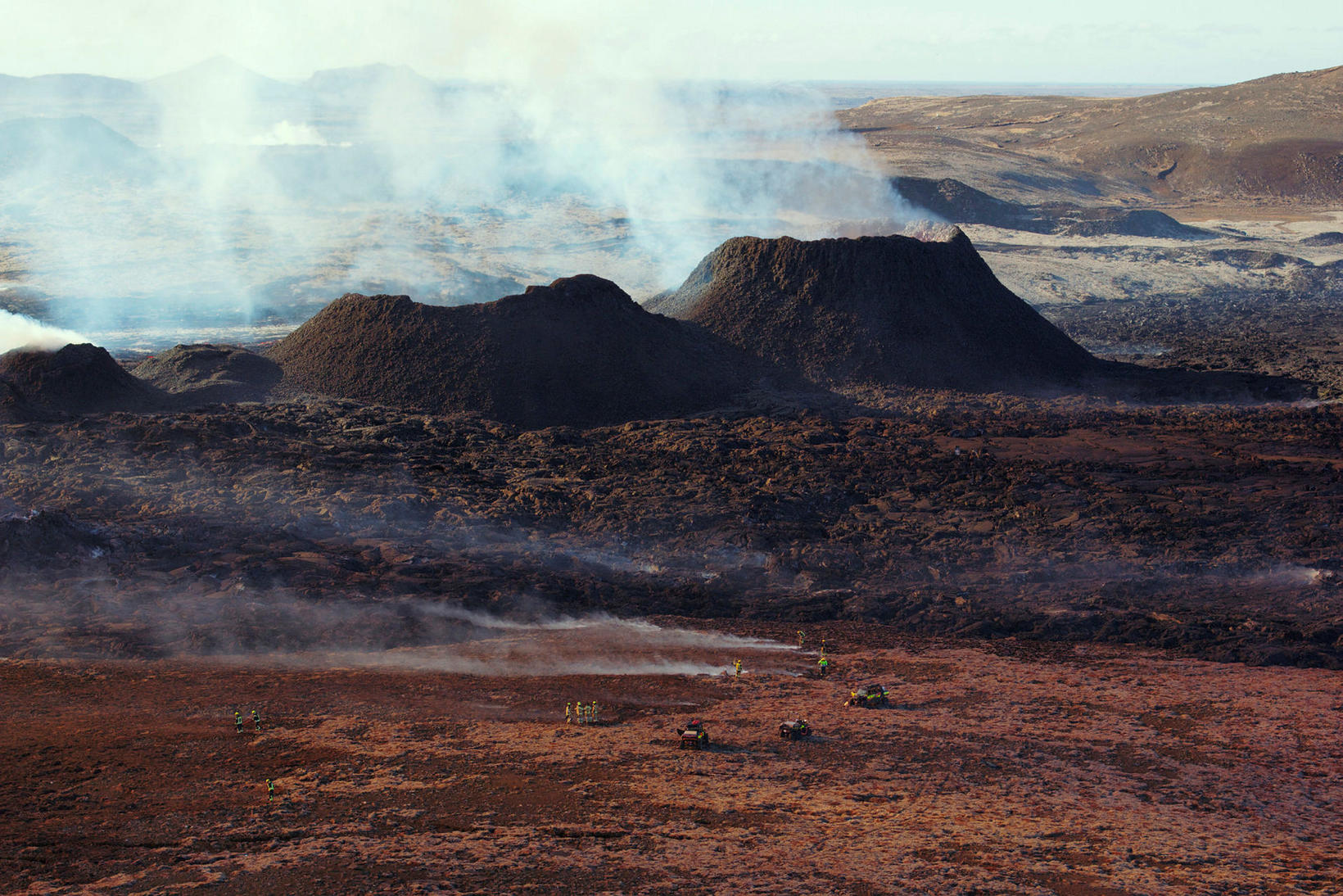"Harder for the magma to get up"“
The eruption that started on March 16 in Sundhnúkagígar crater row ended on May 9. Photo/Hörður Kristleifsson
Volcanologist Þorvaldur Þórðarson says it’s most likely that there will be a volcanic eruption at the Sundhnúkagígar crater row, but it might take two more weeks before something happens.
Around 17 million cubic metres of magma have been added to the magma chamber since the last eruption on the Sundhnúkagígar crater row started on March 16, and this is the second highest amount of magma that has accumulated under Svartsengi. The highest amount was 19 million cubic metres before the eruption on December 18.
Magma collecting in the shallow storage chamber
“There is no tunnel forming or anything like that, but the magma is accumulating in this shallow storage compartment and it causes tension in the roof on top, which seems to be loosening in these tremors following the Sundhnúkagígar tunnel,” Þórðarson told mbl.is.
He expects the eruption to be similar to the eruption that began on March 16 and ended on May 9.
“Although the magma level is twice the smallest amount ever measured, it controls the length of the eruption rather than the power. It may well be that this eruption will be somewhat more powerful and will be similar to the one that occurred on December 18,” Þórðarson says.
He adds that if the eruption is strong at the beginning, the power will fall quickly.
“It’s often forgotten in this discussion that this is such a small amount of magma that has accumulated in the upper storage compartment to what we’ve seen in earlier eruptions on the land. If we put this in cubic kilometres, we’re talking about 0.01-2, whereas in the Holuhraun eruption, the amount was 1.2 cubic kilometres.”
The tunnel has gone soft
The main magma is in the large storage chamber, which is located at a depth of more than eight to twelve kilometers. Þorvaldur says that there are tens of millions of cubic meters of magma and a small leakage of it is maintaining the activity in Svartsengi and at Sundhnúkagígar crater row.
“The magma that came in previous eruptions is relatively warm and the channel has become more soft. It is therefore harder for the magma to get up. It may then be looking for some other routes and it may take longer for it to break up to the surface,” he concludes.








/frimg/1/57/94/1579405.jpg)

/frimg/1/57/87/1578747.jpg)
